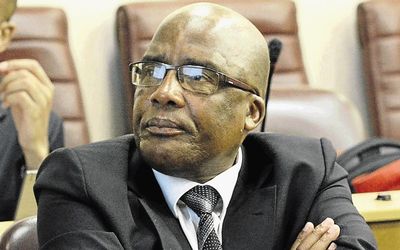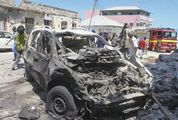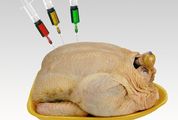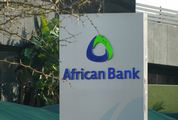THE government has underestimated the cost of National Health Insurance (NHI) and could face a shortfall of R200bn by 2025-26 — almost double the amount it originally anticipated — according to an analysis by economics consultancy Econex.
Its assessment throws into question the feasibility of the government’s ambitions, which envisage a universal health system to which everyone contributes according to their ability, with services provided free at the point of care.
A green paper was published in August 2011, and in December 2015 Health Minister Aaron Motsoaledi released a follow-up white paper for public comment.
Interested parties had until May 31 to make submissions.
In a research note due to be published this week, Econex has summarised its input, in which it argues the NHI white paper overestimates the strength of the economy and underestimates the pent-up demand for health services.
"NHI is the right thing to do, but one should have proper modelling, and think about where the money is going to come from," said Econex MD Nicola Theron. "The scenario they chose in terms of growth is not going to materialise, and it doesn’t help to say it’s anyone’s guess (what NHI will cost)," she said.
The white paper’s main scenario assumes 3.5% annual GDP growth up to 2025-26, which produced a funding shortfall of R72bn, and was used to illustrate potential changes to tax policy. A less optimistic GDP growth scenario of 2% led to a funding shortfall of R108bn by 2025-26 in the white paper.
Econex said more recent GDP data were available and the NHI costings should be updated to reflect these forecasts.
"The current South African GDP growth outlook is much weaker than supposed in the NHI white paper. This is evident both when considering external sources, as well as when considering the recent GDP growth forecasts published by National Treasury in the 2016 Budget Review," said Econex.
It used recent estimates from the World Bank and IMF, which on average range from 0.8% GDP growth in 2015-16 to 2.6% GDP growth in 2019-20 to adjust the white paper scenarios.
It also made adjustments to the cost estimates for NHI, arguing that SA’s large disease burden would lead to a greater increase in demand for services than assumed by the white paper.
It presented four scenarios under different demand and GDP assumptions, which resulted in a funding shortfall for NHI ranging between R109bn and R210bn by 2025.
Funding just the white paper’s estimated shortfall of R108bn would require an increase in tax revenue of about 10%, it said.
Econex also highlighted supply-side constraints that it said would hamper the implementation of NHI.
While the private sector had more healthcare resources per capita than the state, SA as a whole was short of hospital beds and healthcare professionals, the consultancy said.
For example, SA has 64 doctors per 100,000 population, while the average for the Organisation for Economic Co-operation and Development countries is 272 per 100,000.

Health Minister Aaron Motsoaledi. Picture: TREVOR SAMSON
THE government has underestimated the cost of National Health Insurance (NHI) and could face a shortfall of R200bn by 2025-26 — almost double the amount it originally anticipated — according to an analysis by economics consultancy Econex.
Its assessment throws into question the feasibility of the government’s ambitions, which envisage a universal health system to which everyone contributes according to their ability, with services provided free at the point of care.
A green paper was published in August 2011, and in December 2015 Health Minister Aaron Motsoaledi released a follow-up white paper for public comment.
Interested parties had until May 31 to make submissions.
In a research note due to be published this week, Econex has summarised its input, in which it argues the NHI white paper overestimates the strength of the economy and underestimates the pent-up demand for health services.
"NHI is the right thing to do, but one should have proper modelling, and think about where the money is going to come from," said Econex MD Nicola Theron. "The scenario they chose in terms of growth is not going to materialise, and it doesn’t help to say it’s anyone’s guess (what NHI will cost)," she said.
The white paper’s main scenario assumes 3.5% annual GDP growth up to 2025-26, which produced a funding shortfall of R72bn, and was used to illustrate potential changes to tax policy. A less optimistic GDP growth scenario of 2% led to a funding shortfall of R108bn by 2025-26 in the white paper.
Econex said more recent GDP data were available and the NHI costings should be updated to reflect these forecasts.
"The current South African GDP growth outlook is much weaker than supposed in the NHI white paper. This is evident both when considering external sources, as well as when considering the recent GDP growth forecasts published by National Treasury in the 2016 Budget Review," said Econex.
It used recent estimates from the World Bank and IMF, which on average range from 0.8% GDP growth in 2015-16 to 2.6% GDP growth in 2019-20 to adjust the white paper scenarios.
It also made adjustments to the cost estimates for NHI, arguing that SA’s large disease burden would lead to a greater increase in demand for services than assumed by the white paper.
It presented four scenarios under different demand and GDP assumptions, which resulted in a funding shortfall for NHI ranging between R109bn and R210bn by 2025.
Funding just the white paper’s estimated shortfall of R108bn would require an increase in tax revenue of about 10%, it said.
Econex also highlighted supply-side constraints that it said would hamper the implementation of NHI.
While the private sector had more healthcare resources per capita than the state, SA as a whole was short of hospital beds and healthcare professionals, the consultancy said.
For example, SA has 64 doctors per 100,000 population, while the average for the Organisation for Economic Co-operation and Development countries is 272 per 100,000.




















